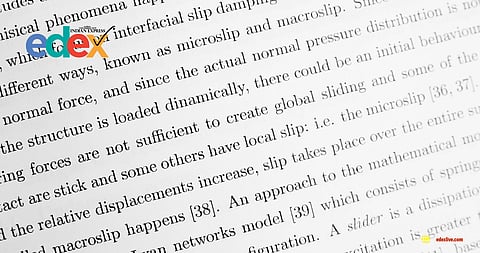

Article was originally titled: "Gains in Translation"
Le Petit Prince by Antoine de Saint-Exupéry – originally written in French – has been translated into more than 300 languages. It is the most translated non-religious text in the world, second only to the Bible.
That children’s books dominate this global list is no surprise. Alongside The Little Prince, we find Harry Potter, Alice in Wonderland, The Adventures of Tintin, and The Adventures of Asterix. Children’s literature, in its innocence and universality, often travels farther than books meant ‘for adults’.
My own reflections on translation were rekindled when I read the obituary of Edith Grossman in The New York Times. Grossman was no ordinary translator; she elevated the craft into an art form at a time when translation was not even considered a serious academic discipline.
Her versions of Gabriel García Márquez’s Love in the Time of Cholera and Cervantes’ Don Quixote became classics in their own right. Grossman insisted that her name appear alongside the authors on the cover – a radical but necessary assertion that translators are co-creators, not invisible intermediaries.
I feel a personal connection to this debate. Some of my books have been translated into multiple Indian languages, opening my writing to readers I may never meet.
Equally, some of my most cherished reading experiences have come through translation: Ghachar Ghochar by Vivek Shanbhag (translated from Kannada by Srinath Perur), Chowringhee by Sankar (translated from Bengali by Arunava Sinha), and Qabar by K R Meera (translated from Malayalam by Nisha Susan). These works reminded me that translators carry across not just words, but entire worlds.
But this raises an important question: is human translation still relevant today? On the one hand, artificial intelligence has made automatic translation widely available. On the other, languages are vanishing at an alarming pace – an estimated 1,500 will disappear by the end of this century.
These two opposing forces make the role of the translator more urgent than ever. Grossman herself addressed this in her 2011 book, Why Translation Matters. Every translation, she argued, is not a ‘shadow’ of the original but a new work, imbued with creativity and life.
While the phrase ‘lost in translation’ is commonly used, what we rarely acknowledge are the gains in translation. One of my favourite examples is Anthea Bell, who translated the Asterix comics from French to English.
She faced a peculiar challenge: French puns did not quite land in English, and the speech bubbles left very limited space. So, she invented new puns – so delightful that many readers claim the English versions are better than the originals.
Closer home, we are witnessing a quiet revolution in Indian translations. By now, most people know of Geetanjali Shree’s Tomb of Sand (translated from Hindi by Daisy Rockwell), which won the 2022 International Booker Prize. Benyamin’s Aadujeevitham (Goat Days), originally in Malayalam and translated into English by Joseph Koyippally, became an international bestseller and was recently adapted into the film The Goat Life.
Bengaluru-based Srinath Perur, who translated Ghachar Ghochar, won the 2020 Sahitya Akademi Award for English translation and has become one of the leading voices in the field.
While Bengali, Malayalam, and Tamil translations have historically enjoyed a head start, works from other regional languages are beginning to shine. Take Phoolsunghi by Pandey Kapil (Bhojpuri), translated by Gautam Choubey – a classic of Bhojpuri literature brought back into the limelight. Or The Wait and Other Stories by Damodar Mauzo (Konkani), translated by Xavier Cota – a collection that reflects small-town Goa and the dynamics of human relationships.
A translator carries within them not just the words of another, but also their rhythms, silences, and cultural codes. Translation allows us to cross the borders of language and geography, to inhabit worlds we might never otherwise enter. It preserves memory, sparks empathy, and reminds us that literature – like humanity itself – is always richer when shared.
(Written by VR Ferose. The writer’s views are personal)
